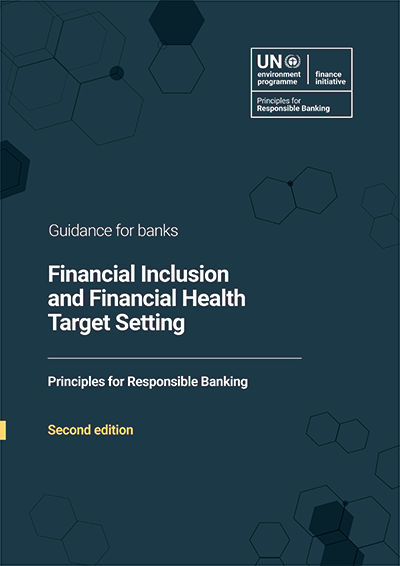The second edition of the Guidance on Financial Inclusion and Financial Health Target Setting supports signatory banks in their efforts to set targets in line with the requirements of the Principles for Responsible Banking.
Banks with ambitious targets for financial inclusion and/or financial health can drive positive outcomes for individuals, entrepreneurs, the whole society and the wider economy.
Translations:
About the Guidance
By taking a systemic approach to financial inclusion and health, and working with partners and stakeholders to achieve these targets, banks can lead and enable significant positive impacts for millions of people across the world.
Using this guidance, banks can understand how to align their core business with the Sustainable Development Goals (SDGs), including SDG 1 (No Poverty), SDG 5 (Gender Equality), SDG 8 (Decent Work and Economic Growth), SDG 9 (Industry, innovation and infrastructure), SDG 10 (Reduced inequalities) and SDG 17 (Partnerships for the goals).
This guidance outlines the key steps for setting targets to drive increasing economic and social inclusion, followed by two illustrative examples of targets in financial inclusion and financial health.
This guidance was developed jointly by a working group of banking signatories of the Principles for Responsible Banking, the United Nations Environment Programme – Finance Initiative (UNEP FI) Secretariat, with support from Global Social Inclusion Consultant Leigh Smyth.



